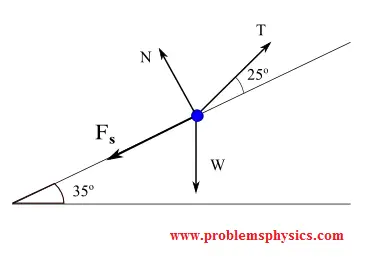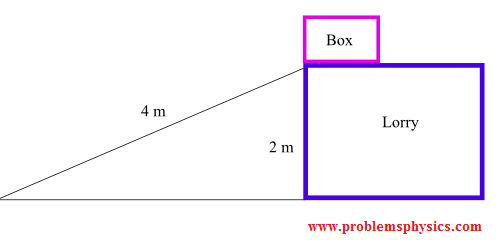Solution
a)
Free Body Diagram

Let the small blue point be the box
Two forces act on the box: the weight W of the box and N the force normal to and exerted by the inclined plane on the box (blue point)
b)
Use system of axes x-y as shown to write all forces in their
components form

Vectors N, W and a in components form:
N = (0 , |N|)
W = (Wx , Wy) = (|W| cos (27°) , - |W| sin (27°))
a = (ax , ay) = (|a| , 0) , box moving down the inclined plane in the direction of positive x hence ay = 0.
Use Newton's second law to write that the sum of all forces on the box is equal to the mass times the acceleration (vector equation)
W + N = M a , M is the mass of the box
In components form, the above equation becomes
(|W| sin (27°) , - |W| cos (27°)) + (0 , |N|) = M (|a| , 0)
For two vectors to be equal, their components must be equal. Hence
x-components are equal : |W| sin (27°) + 0 = M |a|
y-components are equal : - |W| cos (27°) + |N|= 0
M |a| = |W| sin (27°)
weight: |W| = M g ; g = 10 m/2
|a| = M g sin (27°) / M = g sin (27) m/s^2 ≈ 4.5 m/s^2
c)
|N| = |W| cos (27°) = 2 × 10 cos (27°) ≈ 17.8 N









